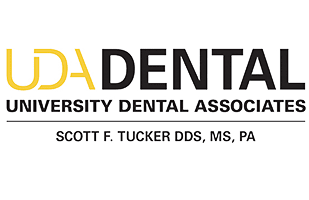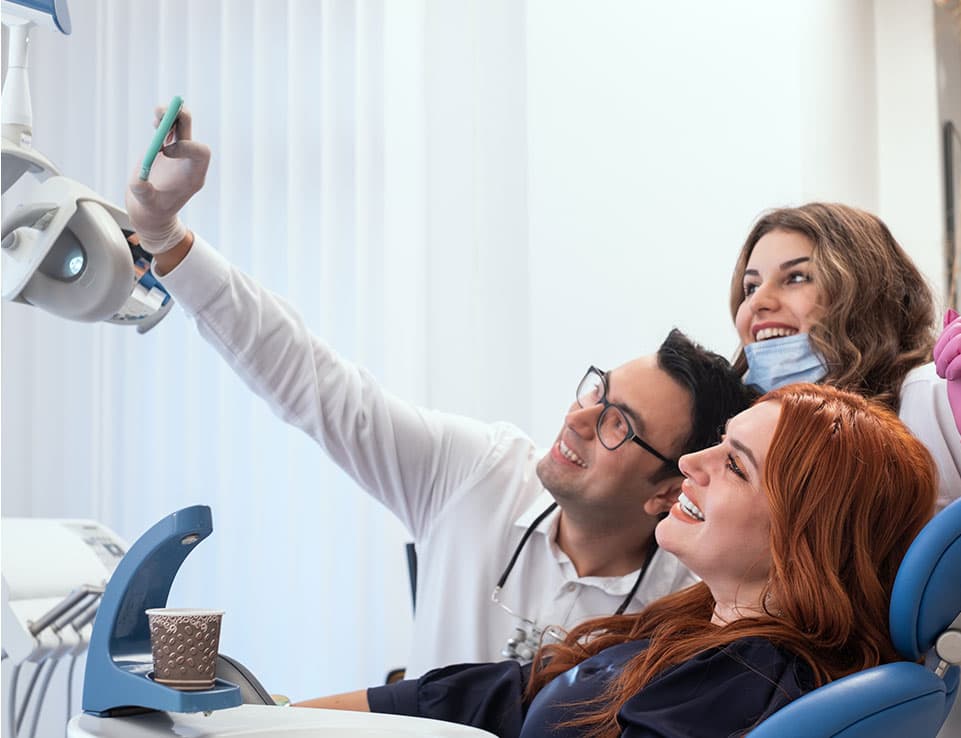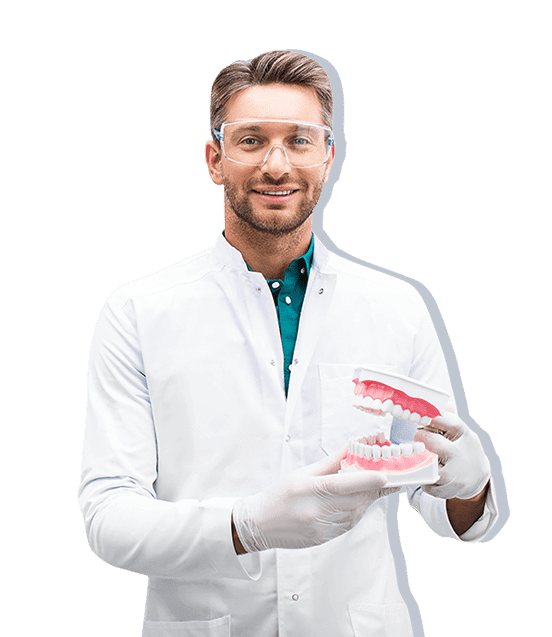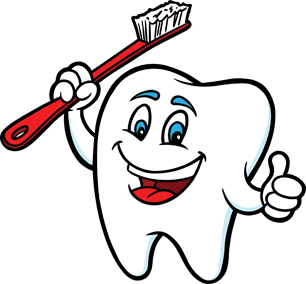Our pediatric dental practice is designed with kids in mind. From the décor, to the size of the equipment, to the overhead TV’s at every chair, everything is planned to take as much anxiety out of a dental visit as possible.
Each of our staff members loves working with children, and their care and compassion are clearly evident in every encounter with your child. After the visit, you won’t find a measly toy box; we have a “toy wall!” Along with other contests and prizes, each month we award a prize to our “No Cavity Club” winner. It truly is a special place.
Meet the Doctor
Dr. Kevin Kizer is a diplomate of the American Board of Pediatric Dentistry (which means he is a board certified Pediatric Dentist). He is a graduate of the University of Washington School of Dentistry.
Dr. Kizer then continued his education by completing a two-year residency program in Pediatric Dentistry at The Children’s Hospital in Denver, Colorado, one of the nation’s best hospitals for children.
The doctor continually updates his educational and clinical skills through his membership in:
- The American Dental Association
- The American Academy of Pediatric Dentistry
- The North Carolina Dental Society
- The North Carolina Academy of Pediatric Dentistry
Dr. Kizer grew up in Alaska and enjoys the outdoors. He loves to travel and cook. He also loves chocolate, but brushes and flosses! Dr. Kizer is married and has two grown children.
Your Child’s First Visit
There seems to be a lot of confusion amongst parents, pediatricians, and dentists about the correct timing for the first dental visit.
When Should the First Visit be?
Some family dentists may tell parents not to bring children to their practice before they have all their primary teeth (age two or three), sometimes they even recommend to wait until age 6. The parent of a fearful or uncooperative child may be told “we have to wait until your child is old enough to sit still”. Under unfavorable circumstances, delay of dental care can lead to catastrophic disease progression that is certainly not in the best interest of the child.
The AAPD encourages parents and other care providers to help every child establish a dental home by 12 months of age. This means a child should have his or her first dental visit at the first birthday!
What to Expect
At this examination visit the dentist will record a thorough medical and dental history. Parents should be prepared to review the prenatal, perinatal, and postnatal period of their child’s development.
Typically, children’s teeth are cleaned, fluoridated, and examined at the first visit. Not only is this beneficial to your child’s oral health, we learn a lot about your child and how they respond to dental health care in the dental office setting.
For very young children, the oral examination is usually accomplished with the parent present in the room. It is most often only a visual exam. The child patient may be sitting in the parent’s lap with the head in the dentist’s lap (knee-to-knee position). Kids at this age vary in their behavior from simple curiosity to fussiness to downright hollering! Don’t worry, we are able to handle anything, and you should not be concerned.
For older kids, a more thorough examination is performed, and x-rays are taken only as necessary and when the child is able to tolerate them.
One important aspect of this visit is to discuss the child’s risk of developing oral and dental disease. Based on this assessment the dentist will determine the appropriate recall interval for the next dental visit. In high-risk cases this may be as early as three months. Dental decay in children can progress very rapidly.
Dr. Kizer will also evaluate the child’s oral and dental development. The common question about “how many teeth at what age?” will be addressed. He will also evaluate the need for fluoride supplementation. It may be important to discuss non-nutritive oral habits (finger sucking, pacifier), injury prevention, oral hygiene, and effects of diet on the dentition.
Dr. Kizer has been specially trained in behavior management techniques that will help your child through his/her appointments. Should extensive dental treatment be necessary, he will evaluate your child’s behavior and may recommend nitrous oxide (“happy air”) or other types of sedation to make your child more comfortable and relaxed.
We invite you to stay with your child during the initial examination. During future appointments, however, we suggest that you remain in the reception room while we are working with your child. We find we can establish a direct and close rapport more quickly with your child when an “audience” is not present. Our purpose is to gain your child’s confidence and overcome any apprehension. When kids see that their parents are relaxed and unconcerned, they, themselves, are more relaxed and unconcerned!
What is Pediatric Dentistry?
Pediatric Dentistry provides primary and comprehensive dental care for infants, children and young adults, including those with special health care needs.
Pediatric dentistry focuses on the oral health and unique needs of young people. After completing a four-year dental school curriculum, two additional years of rigorous training are required to become a pediatric dentist. This specialized program of study and hands-on experience prepares pediatric dentists to meet the unique needs of your infants, children and adolescents.
We are concerned about your child’s total health care. Good oral health is an important part of total wellness. Establishing us as your child’s “dental home” provides us the opportunity to implement preventive oral hygiene habits that keep a child free from dental/oral disease. We focus on prevention, early detection and treatment of dental diseases, and keep current on the latest advances in dentistry for children.
Pleasant visits to the dental office promote trust and confidence in your child that will last a lifetime. Our goal is to help all children feel good about visiting the dentist and teach them how to properly care for their teeth. From our special office design to our communication style, our main concern is what is best for your child:
- Dr. Kizer focuses on providing an all-inclusive continuum of care while treating healthy and medically compromised children.
- Dr. Kizer’s comprehensive training includes pharmacological management of patients, pediatric medicine, emergency care, diagnostic and restorative skills, and child growth and development.
- Pediatric Dentists focus on being the primary care providers for all children with oral health care needs.
What are the key elements of this specialty that make it so unique?
- Most specialties are procedure-defined (endodontics, periodontics, etc.). In comparison, pediatric dentistry is defined by a specific age of patients treated. There is no limitation to what type of treatment they provide.
- Pediatric dentists are primary providers. There is no need for a referral of patients. Parents can choose to have their children evaluated and treated by a pediatric dentist just like they can choose to have their child treated by a pediatrician.
- Pediatric dentists see patients at any age from birth up to their late teens.
- Pediatric dentists also possess the training and experience needed to evaluate and treat patients that are medically compromised. No other dental specialty is more involved in the hospital care of patients.
Frequently Asked Questions
Here is a list of frequently asked questions—of course, feel free to contact us if your question isn’t answered on this page.
General Topics
What Is A Pediatric Dentist?
The pediatric dentist has an extra two to three years of specialized training after dental school, and is dedicated to the oral health of children from infancy through the teenage years. The very young, pre-teens, and teenagers all need different approaches in dealing with their particular needs and behavior, guiding their dental growth and development, and helping them avoid future dental problems. The pediatric dentist is best qualified to meet these needs.
Why Are Primary Teeth so Important?
It is very important to maintain the health of the primary teeth. Neglected cavities can, and frequently do, lead to problems which affect developing permanent teeth. Primary teeth or baby teeth are important for proper chewing and eating as well as providing space for the permanent teeth and guiding them into the correct position. Primary teeth also affect the development of speech and add to an attractive appearance. While the front 4 teeth last until 6-7 years of age, the back teeth (canines and molars) are not replaced until age 9-12.
Eruption Of Your Child’s Teeth
Children’s teeth begin forming before birth. Usually around 6 months, the first primary (or baby) teeth begin to erupt. The first are the lower central incisors, followed closely by the upper central incisors. Although all 20 primary teeth usually appear by age 3, the pace and order of their eruption varies.
Permanent teeth begin appearing around age 6, starting with the first molars and lower central incisors. This process continues until approximately age 12 or 13 (although wisdom teeth won’t come in until much later).
Dental Emergencies
Toothache: Clean the area of the affected tooth thoroughly. Rinse the mouth vigorously with warm water or use dental floss to dislodge impacted food or debris. If the pain still exists, contact your child’s dentist. DO NOT place aspirin on the gum or on the aching tooth. If the face is swollen, apply cold compresses and contact your dentist immediately or go to a hospital emergency department. A pain reliever, such as ibuprofen or acetaminophen, can be given.
Cut or Bitten Tongue, Lip or Cheek: Apply cold compresses to any bruised areas. If there is bleeding, apply firm but gentle pressure with a gauze or cloth. If bleeding does not stop after 15 minutes or it cannot be controlled by simple pressure, take the child to hospital emergency department.
Knocked Out PERMANENT Tooth: Find the tooth. Handle the tooth by the crown, not the root portion. You may rinse the tooth but DO NOT clean or handle the tooth unnecessarily. Inspect the tooth for fractures. If it is sound, try to reinsert it in the socket. Have the patient hold the tooth in place by biting on gauze.
If you cannot reinsert the tooth, transport the tooth in a cup containing the patient’s saliva or milk. If the patient is old enough, the tooth may also be carried in the patient’s mouth. The patient must see a dentist or hospital emergency department immediately! Time is a critical factor in saving the tooth. Do not reinsert a primary (or baby) tooth.
Dental Radiographs (X-Rays)
Radiographs (X-Rays) are a vital and necessary part of your child’s dental diagnostic process. Without them, certain dental conditions can and will be missed.
Radiographs detect much more than cavities. For example, radiographs may be needed to survey erupting teeth, diagnose bone diseases, evaluate the results of an injury, or plan orthodontic treatment. Radiographs allow dentists to diagnose and treat health conditions that cannot be detected during a clinical examination. If dental problems are found and treated early, dental care is more comfortable for your child and more affordable for you.
On average, most pediatric dentists follow the American Academy of Pediatric Dentistry (AAPD) guidelines and request radiographs approximately once per year. However, the AAPD recommends radiographs and examinations every six months for children with a high risk of tooth decay. Also, specific areas with dental problems may be marked to “watch” by the dentist with radiographs every 6 months.
Pediatric dentists are particularly careful to minimize the exposure of their patients to radiation. With contemporary safeguards, the amount of radiation received in a dental X-ray examination is extremely small. The risk is negligible. In fact, the dental radiographs represent a far smaller risk than an undetected and untreated dental problem. Protective body aprons and shields will protect your child. Today’s equipment filters out unnecessary x-rays and restricts the x-ray beam to the area of interest. Our office uses digital radiographs, assuring even more that your child receives only a minimal amount of radiation exposure.
What’s the Best Toothpaste for my Child?
Tooth brushing is one of the most important tasks for good oral health. Many toothpastes and/or tooth polishes, however, can damage young smiles. They contain harsh abrasives, which can wear away young tooth enamel. When looking for toothpaste for your child make sure to pick one that is recommended by the American Dental Association. These toothpastes have undergone testing to insure they are safe to use.
Remember, children should spit out toothpaste after brushing to avoid getting too much fluoride. If too much fluoride is ingested, a condition known as fluorosis can occur. For children younger than 3 years old, caregivers should begin brushing children’s teeth as soon as they begin to come into the mouth by using fluoride toothpaste in an amount no more than a smear or the size of a grain of rice. For children 3 to 6 years of age, dispense no more than a pea-sized amount of fluoride toothpaste. For all children 6 and under, adults should supervise AND brush for them.
Does Your Child Grind His Teeth At Night? (Bruxism)
Parents are often concerned about the nocturnal grinding of teeth (bruxism). Some studies show as many as 70% of children grind their teeth during the primary teeth years. Often, the first indication is the noise created by the child grinding on his or her teeth during sleep. Or the parent may notice wear (teeth getting shorter) of the teeth. There are various theories as to why this is so common, but none apply to all children in all cases.
The vast majority of cases of pediatric bruxism do not require any treatment. For children in permanent teeth, if excessive wear of the teeth (attrition) is present, then a mouth guard (night guard) may be indicated.
The good news is most children outgrow bruxism. The grinding gets less between the ages 6-9 and children tend to stop grinding between ages 9-12. If you suspect bruxism, discuss this with your pediatrician or pediatric dentist.
Thumb and Pacifier Sucking
Sucking is a natural reflex and infants and young children may use thumbs, fingers, pacifiers and other objects on which to suck. It may make them feel secure and happy or provide a sense of security during difficult periods. Since thumb sucking is relaxing, it may induce sleep.
Thumb or pacifier sucking that persists beyond the eruption of the permanent teeth can cause problems with the proper growth of the mouth and tooth alignment. How intensely a child sucks determines whether or not dental problems may result. Children who rest their thumb or pacifier passively in their mouths are less likely to have difficulty than those who suck vigorously.
Children should cease thumb sucking by the time their permanent front teeth are ready to erupt. Usually, children stop between the ages of two and four. Peer pressure causes many school-aged children to stop.
Pacifiers are no substitute for thumb sucking. They can affect the teeth essentially the same way as sucking fingers and thumbs. However, use of the pacifier can be controlled and modified more easily than the thumb or finger habit.
A few suggestions to help your child get through thumb sucking:
- Instead of scolding children for thumb sucking, praise them when they are not.
- Provide positive reinforcement and goals for discontinuing the habit.
- Set up short-term goals that are achievable (not sucking for the length of a TV show or car ride), and then praise when the goals are reached!
- Dr. Kizer can encourage children to stop sucking and explain what could happen if they continue.
- For children who desire to stop, help them with reminders by bandaging the thumb or putting a sock on the hand at night.
What is Pulp Therapy?
The pulp of a tooth is the inner, living core of the tooth. The pulp contains nerves, blood vessels, connective tissue and reparative cells. The purpose of pulp therapy in Pediatric Dentistry is to maintain the vitality of the affected tooth (so the tooth is not lost).
Dental caries (cavities) and traumatic injury are the main reasons for a tooth to require pulp therapy. Pulp therapy is often referred to as a “nerve treatment”,”children’s root canal”, “pulpectomy” or “pulpotomy”. The two most common forms of pulp therapy in children’s teeth are the pulpotomy and pulpectomy.
A pulpotomy removes the diseased pulp tissue within the crown portion of the tooth. Next, an agent is placed to prevent bacterial growth and to calm the remaining nerve tissue. This is followed by a final restoration (usually a stainless steel crown).
A pulpectomy is required when the entire pulp is involved (into the root canal(s) of the tooth). During this treatment, the diseased pulp tissue is completely removed from both the crown and root. The canals are cleansed, disinfected and in the case of primary teeth, filled with a resorbable material. Then a final restoration is placed. A permanent tooth would be filled with a non-resorbing material.
What is the Best Time for Orthodontic Treatment?
Developing malocclusions, or bad bites, can be recognized as early as 2-3 years of age. Often, early steps can be taken to reduce the need for major orthodontic treatment at a later age.
Stage I – Early Treatment: This period of treatment encompasses ages 2 to 6 years. At this young age, we are concerned with underdeveloped dental arches, the premature loss of primary teeth, and harmful habits such as finger or thumb sucking. Treatment initiated in this stage of development is often very successful and many times, though not always, can eliminate the need for future orthodontic/orthopedic treatment.
Stage II – Mixed Dentition: This period covers the ages of 6 to 12 years, with the eruption of the permanent incisor (front) teeth and 6 year molars. Treatment concerns deal with jaw relationships and dental realignment problems. This is an excellent stage to start treatment, when indicated, as your child’s hard and soft tissues are usually very responsive to orthodontic or orthopedic forces.
Stage III – Adolescent Dentition: This stage deals with the permanent teeth and the development of the final bite relationship.
Early Infant Oral Care
When should my child first see a Pediatric Dentist?
According to the American Academy of Pediatric Dentistry (AAPD), your child should visit the dentist by his/her 1st birthday.
How can I prevent tooth decay from a bottle or nursing?
Encourage your child to drink from a cup as he or she approaches the first birthday. A serious form of decay among young children is baby bottle tooth decay. This condition is caused by frequent and long exposures of an infant’s teeth to liquids that contain carbohydrate. Among these liquids are milk (including breast milk), formula, fruit juice and other sweetened drinks.
Children should not fall asleep with a bottle. If your child needs a bottle as a comforter at bedtime, only use water. At night, liquids pool around your child’s teeth giving plaque bacteria an opportunity to produce acids that will attack the teeth. If your child won’t fall asleep without the bottle and its usual beverage, gradually dilute the bottle’s contents with water over a period of two to three weeks until it is 100% water.
When should I start cleaning my baby’s teeth?
The sooner the better! Starting at birth and after each feeding, wipe your baby’s gums with damp washcloth or gauze pad to remove plaque. Remember that young children do not have the dexterity to brush their teeth effectively.
Any advice on teething?
From six months to age 3, your child may have sore gums when teeth erupt. Many children like a clean teething ring, cool spoon, or cold wet washcloth. Some parents swear by a chilled ring; others simply rub the baby’s gums with a clean finger.
Prevention
Care of Your Child’s Teeth
Begin daily brushing as soon as the child’s first tooth erupts. By age 5, children should be able to brush their own teeth twice a day, but caregivers should also brush for them (before or afterwards) until about age seven to make sure they are doing a thorough job.
Proper brushing removes plaque from the inner, outer and chewing surfaces. When teaching children to brush, place toothbrush at a 45-degree angle; start along gum line with a soft bristle brush in a gentle circular motion. Brush the outer surfaces of each tooth, upper and lower. Repeat the same method on the inside surfaces and chewing surfaces of all the teeth. Finish by brushing the tongue to help freshen breath and remove bacteria.
Flossing removes plaque between the teeth where a toothbrush can’t reach. Flossing should begin when any two teeth touch. You should floss the child’s teeth until he or she can do it alone properly and consistently.
Good Diet = Healthy Teeth
Healthy eating habits lead to healthy teeth. Like the rest of the body, the teeth, bones and the soft tissues of the mouth need a well-balanced diet. Children should eat a variety of foods from the five major food groups. Most snacks that children eat can lead to cavity formation. The more frequently a child snacks, the greater the chance for tooth decay. How long food remains in the mouth also plays a role. For example, hard candy and breath mints stay in the mouth a long time, which cause longer acid attacks on tooth enamel. If your child must snack, choose nutritious foods such as vegetables, low-fat yogurt, and low-fat cheese, which are healthier and better for children’s teeth. Allow at least two hours between meals and snacks, having only water during these intervals.
Seal Out Decay
A sealant is a clear or shaded plastic material that is applied to the chewing surfaces (grooves) of the back teeth (premolars and molars), where four out of five cavities in children are found. This sealant acts as a barrier to food, plaque and acid, thus protecting the decay-prone areas of the teeth. Unfortunately, sealants do not protect the sides of teeth or in between adjacent teeth.
Fluoride
Fluoride is an element which has been shown to be beneficial to teeth. However, too little or too much fluoride can be detrimental to the teeth. Having little or no fluoride will not strengthen the teeth to help them resist cavities. Excessive fluoride ingestion by preschool-aged children can lead to dental fluorosis, which is a chalky white to even brown discoloration of the permanent teeth.
Many children often get more fluoride than their parents realize. Being aware of a child’s potential sources of fluoride can help parents prevent the possibility of dental fluorosis.
Some of these sources are:
- Too much fluoridated toothpaste at an early age.
- The inappropriate use of fluoride supplements.
- Hidden sources of fluoride in the child’s diet.
- Children younger than three may not be able to expectorate (spit out) fluoride-containing toothpaste when brushing. As a result, these youngsters may ingest an excessive amount of fluoride during tooth brushing. See “What’s the Best Toothpaste” FAQ above.
- Certain foods contain high levels of fluoride, especially powdered concentrate infant formula, soy-based infant formula, infant dry cereals, creamed spinach, and infant chicken products. Please read the label or contact the manufacturer. Some beverages also contain high levels of fluoride, especially drinks manufactured in fluoridated cities.
Xylitol – Reducing Cavities
The American Academy of Pediatric Dentistry (AAPD) recognizes the benefits of xylitol on the oral health of infants, children, adolescents, and persons with special health care needs.
The use of XYLITOL GUM by mothers (2-3 times per day) starting 3 months after delivery and until the child is 2 years old, has proven to reduce cavities up to 70% by the time the child is 5 years old.
Xylitol provides additional protection that enhances all existing prevention methods.
Xylitol is widely distributed throughout nature in small amounts.
Studies suggest xylitol intake that consistently produces positive results ranged from 8-20 grams per day divided into 3-7 consumption periods. Higher intake did not result in greater reduction and may lead to diminishing results. Similarly, consumption frequency of less than 3 times per day showed no effect.
To find gum or other products containing xylitol, try visiting your local health food store or search the Internet to find products containing 100% xylitol.


























